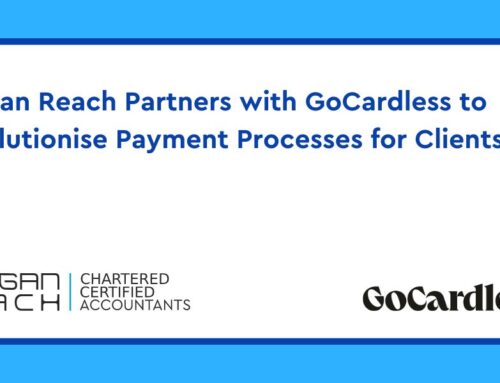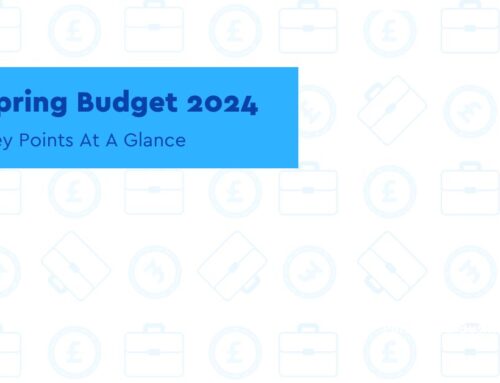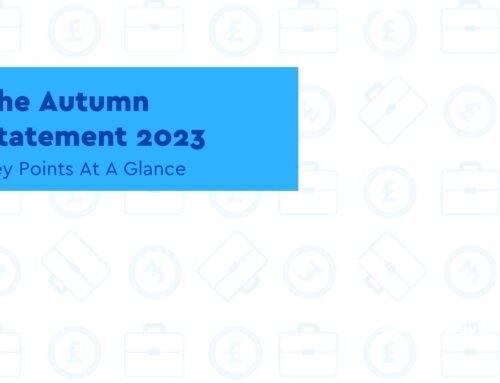What will be in the upcoming Autumn Budget for small businesses?
Key Points
- The government will be looking at where to spend and invest – and also where to plug its financial gaps
- The Chancellor has already announced a £500 million Plan for Jobs extension to help people back into work
The second Budget in 2021 will be announced alongside a spending review on October 27. With the UK still recovering, what could be in this announcement for small businesses?
The government will be looking at where to spend and invest – and also where to plug its financial gaps. Here’s what to watch out for.
- A ‘technical Budget’ that makes tweaks to raise revenue
Tax advisory firm BDO predicts that the Chancellor may make a number of tweaks that amount to ‘stealth’ tax changes.
One of these has already been announced. The reform to basis periods for sole traders and partnerships is set for April 2024. This means that business profits will be calculated for the tax year rather than the accounting year. BDO says that while this is being branded as a simplification, “in practice, it will at the very least accelerate revenue for the Exchequer for 2023 and the next five years.”
If the government decides to avoid making ‘headline’ announcements, it may detail small changes like this one. For example, BDO says that “lots of commentators are also predicting changes to inheritance tax and capital gains tax following recent ‘simplification’ reviews by the Office of Tax Simplification.”
- The outcome of the government’s spending review
The Chancellor will announce the outcome of a spending review that “will set UK government departments’ resource and capital budgets for 2022-23 to 2024-25 and the devolved administrations’ block grants for the same period.”
Expect to hear how the government will, over the next three years:
- Invest in public services, across the NHS, education, the criminal justice system and housing
- Spread opportunity across the UK, improving lagging places by working with local leaders and strengthening the private sector where it’s weak
- Lead the transition to net zero across the country and globally
- Advance “Global Britain” and seize the “opportunities of EU exit”
- Develop “plans for an infrastructure and innovation revolution” and cement the UK as a “scientific superpower”
- Will fuel duty stay frozen?
In March, the government announced that fuel duty will be frozen at 57.95p for the eleventh consecutive year.
But The Telegraph reports that Boris Johnson hasn’t ruled out a fuel duty rise for the upcoming announcement.
And Matthew Walters, head of consultancy services at LeasePlan UK, says that if the government doesn’t specifically announce that they’re maintaining the freeze, fuel duty will rise: “It’s worth noting that without any reference to an extension from the Chancellor the freeze will automatically end. That’s because existing legislation around fuel duty stipulates how much it goes up by each year.”
- More on the ‘Plan for Jobs’ extension
The Chancellor has already announced a £500 million Plan for Jobs extension to help people back into work.
For small businesses, note that the Kickstart Scheme will now last until March 2022, with applications closing on December 17, 2021.
Through this scheme, you can hire young people aged 16-24 and on Universal Credit for six-month work placements, funded by the government.
The government has also extended the £3,000 incentive for every apprentice you hire until January 31, 2022.
The spending review on 27 October will confirm specific funding for each measure.
- Will the government listen to calls to keep VAT low?
The temporary reduction to hospitality and tourism VAT ended 1 October, when it increased from five per cent to 12.5 per cent. It’s due to return to pre-pandemic 20 per cent in April 2022.
But the industry is pushing the government to keep VAT at 12.5 per cent to aid continued recovery.
According to BigHospitality, trade bodies UK Hospitality, the British Beer and Pub Association, the British Institute of Innkeeping, Tourism Alliance and the Association of Leading Visitor Attractions are warning that rising VAT “risks derailing the recovery…when businesses are still in survival mode.”
- What’s happening with capital gains tax?
In 2020 the Office for Tax Simplification (OTS) recommended that the government should bring capital gains tax in line with income tax.
Capital gains tax is a tax on the profit of an item sold that’s increased in value. It’s the gain that’s taxed, rather than the amount of money received.
The OTS recommendations, if implemented, would see the tax rate on capital gains rise to 20 per cent for basic rate taxpayers. The rate for higher rate taxpayers would rise to 40 per cent.
During the March Budget, the government froze the threshold at which you start paying capital gains tax at £12,570 until 2026. Keep an eye out for any further changes to the tax on 27 October.
- More details on Help to Grow: Digital
In March, the government announced the Help to Grow scheme for businesses with employees. The scheme aims to “help you learn new skills, reach more customers and boost your profits.”
Help to Grow: Management, which aims to help businesses develop strategic skills, has already launched.
The second part, Help to Grow: Digital, will launch this autumn. This is free advice on how technology can help your business, with a discount of up to 50 per cent on the costs of approved software, worth up to £5,000.
You need to have between five and 249 employees, be registered at Companies House, and have been trading for 12 months.
The government says full details on eligible businesses and software will be revealed this autumn, so further information may be given on 27 October.
What’s already been announced?
- A National Insurance hike of 1.25 per cent from April 2022The publication of the long-awaited business rates review in autumn 2021
This article was derived from Simply Business: https://www.simplybusiness.co.uk/knowledge/articles/2021/10/autumn-budget-2021-predictions-for-small-businesses/
Chancellor announces extension of Kickstart Scheme
Key Points
- Businesses have been given an extra three months to take on young employees
- They now have until March 31 to start the candidate’s placement
Businesses have been given an extra three months to take on young employees through the Government funded Kickstart Scheme after Rishi Sunak extended the initiative last week.
Firms have until December 17 this year to apply to employ a Kickstart candidate, but now have until March 31 to start the candidate’s placement.
Under the terms of the scheme, the government pays minimum wage for 25 hours a week to Kickstart candidates, as well as paying other costs such as National Insurance and pension contributions.
The Government is also extending its £3000 incentive payment for every apprentice a business hires up until January 31, 2022.
To be successful, your Kickstart application must show that your business is established and financially stable, and that you can give a Kickstart candidate a good experience of work that increases their future chances.
Once a Kickstart application is successful, business vacancies become live on a Jobcentre Plus site, through which candidates can apply. Businesses can interview candidates to ensure that they are suitable.
Employers of all sizes can apply for funding until December 17, 2021 which covers:
- 100% of the National Minimum Wage (or the National Living Wage depending on the age of the participant) for 25 hours per week for a total of 6 months
- Associated employer National Insurance contributions
- Minimum automatic enrolment pension contributions
Employers can spread the job start dates up until March 31, 2022 and will get funding for 6 months once the young person has started their job.
This article was sourced using Gov.uk:
https://www.gov.uk/government/collections/kickstart-scheme
https://www.gov.uk/government/news/500-million-plan-for-jobs-expansion
Salary sacrifices ‘may mitigate the NICs rise’
Key Points
- From April 2022, NICs will rise by 1.25% for employees, employers and the self-employed
- Employers might be able to reduce their employees’ liability to the NICs rise by taking a salary sacrifice
Salary sacrifice arrangements could help lessen employees’ additional tax bills from the rise in National Insurance contributions (NICs) from April 2022, according to a report.
From April 2022, NICs will rise by 1.25% for employees, employers and the self-employed, to fund the Government’s new health and social care levy.
Aegon, the life insurance and pensions company, said employers might be able to reduce their employees’ liability to the NICs rise by taking a salary sacrifice.
Salary sacrifice is an agreement between an employer and employee to reduce an employee’s cash pay in return for a non-cash benefit.
If this arrangement is used to pay into a pension scheme, the sacrificed portion of the salary technically becomes an employer pension contribution.
As these are not liable to income tax or NICs, the individual’s tax liability is reduced.
It’s unlikely employees will be able to use this to reduce their payments to the 1.25% health and social care levy, however, which will replace the NICs hike from April 2023.
Kate Smith, head of pensions at Aegon, called salary sacrifice a “powerful and tax-efficient way of paying pension contributions”.
“Salary sacrifice arrangements are a powerful and tax-efficient way of paying pension contributions, as neither the employee nor the employer pay National Insurance contributions on the amount of salary exchanged. And the employee won’t pay income tax on the amount exchanged either. Salary sacrifice arrangements designed to pay pension contributions have become increasingly popular in recent years as many employers use these to help cover the costs of pension contributions.
“The increase in 1.25% NICs from next April increases employers’ payroll costs and will reduce employees’ take-home pay, making salary sacrifice even more attractive to dampen the increased cost,” she added.
Salary sacrifice isn’t suitable for everyone as it could lead to reduction in some state benefits and could impact mortgage applications. It may also impact other employee benefits such as life cover, although many employers will use a higher “reference” salary for these purposes.
Salary sacrifice can’t be used to reduce someone’s earnings below the national minimum wage rates.
This article was sourced from Practice Web
Upward trend in R&D tax relief claims continues
Key Points
- The latest figures cover the period to March 2020 and show a 16% increase in the number of claims
- This is primarily attributable to an increase in SME claimants
The number and monetary value of claims for tax relief for research and development expenditure increased in the year to March 2020, according to the latest statistics from HMRC.
Large companies claim under the research and development expenditure credit (RDEC) scheme, while a separate scheme operates for small and medium-sized enterprises (SMEs). SMEs can benefit from either a larger expense deduction, or, if loss making, a payable tax credit.
The latest figures cover the period to March 2020 and show a 16% increase in the number of claims, primarily attributable to an increase in SME claimants.
The value of the tax relief claimed has also increased by 19% compared with a 15% increase in R&D expenditure subject to the claims.
Even though R&D tax relief has been around since 2000/01, there are a surprising (and growing) number of new claimants each year. The latest figures highlight a 25% increase in claimants for the SME scheme in the year to 2018/19 and a 7% increase in RDEC claimants.
The amount of R&D expenditure upon which tax relief is claimed has shown a sharp increase since 2014. This is attributed in part to the removal of the minimum expenditure threshold of £10,000 from April 2012.
RDEC (research and development expenditure credit) is a UK government tax incentive designed to reward innovative companies for investing in research and development (R&D). It is targeted at large companies, but it also accessed by SMEs in some circumstances.
The small and medium-sized research and development relief is the most common option for small businesses. You must have less than 500 staff and a turnover of less than £100 million.
This scheme allows you to deduct an extra 130% of qualifying costs from your yearly profits, as well as your normal 100% deduction, totaling 230%. If your company is making a loss, you can claim a tax credit worth up to 14.5% of the surrenderable loss.
Companies who are making their first R&D claim can qualify for Advance Assurance. If Advance Assurance is granted, any R&D claims in the first 3 accounting periods will be accepted if they’re in line with what was discussed and agreed.
Connected companies
The staff, turnover and balance sheets of any connected companies should be included in your total. Your company is connected to another one if:
- It holds over 50% of the voting rights in another company
- Another company holds over 50% of the voting rights in your company
Partner companies
You have a partner company if:
- Another company holds over 25% of your voting rights or capital
- You hold over 25% of another company’s voting rights or capital
You need to include a proportion of the staff, turnover and balance sheets of partner companies. This should be based on the percentage of voting rights and capital that connects the 2 companies. For instance, if you own 30% of another company you should include 30% of its staff, turnover and balance sheets when calculating if you’re a SME.
Costs you can claim
You can claim certain costs on the project from the date you start working on it until you develop or discover the advance, or the project is stopped.
Employee costs
For staff working directly on the R&D project, you can claim a proportion of their:
- Salaries
- Wages
- Class 1 National Insurance contributions
- Pension fund contributions
You can claim for administrative or support staff who work to directly support a project. For example, human resources used to recruit a specific person to work on the project. You cannot claim for clerical or maintenance work that would have been done anyway, like managing payroll.
You can claim 65% of the relevant payments made to an external agency if they provide staff for the project.
Subcontractor costs
You can claim 65% of the relevant costs of using a subcontractor for your R&D activities.
Software
You can claim for software licence fees bought for R&D and a reasonable share of the costs for software partly used in your R&D activities.
Consumable items
You can claim for the relevant proportion of consumable items used up in the R&D. This includes:
- Materials
- Utilities
Clinical trials volunteers
For R&D projects in the pharmaceutical industry, you can claim for payments made to volunteers involved in clinical tests.
Costs that cannot be claimed
You cannot claim for:
- The production and distribution of goods and services
- Capital expenditure
- The cost of land
- The cost of patents and trademarks
- Rent or rates
This article was sources from ICAEW and gov.uk
Our Latest Snippets
Weekly HMRC, Gov’t and tax updates
Interest rate rise ‘likely by end of year’
A Bank of England policymaker has given the clearest signal yet that interest rates may rise before the end of the year amid rising concern over inflation. Michael Saunders, an external member of the Bank’s rate setting monetary policy committee, said in an interview at the weekend that a rise in interest rates could come “significantly earlier” than previously anticipated.
The Bank has until recently been reluctant to tighten policy prematurely for fear of jeopardising the economic recovery. A rise in rates would help curb escalating price increases but would put extra pressure on households and businesses by increasing the cost of their debt.
Making a PAYE Settlement Agreement (PSA) payment
A PAYE Settlement Agreement (PSA) allows you to make one annual payment to cover all the tax and National Insurance due on small or irregular taxable expenses or benefits for your employees. Any electronic payments for a PSA for the tax year ended April 5, 2021 must clear into the HMRC bank account by October 22, 2021. If you pay late you may have to pay interest or a late payment penalty, or both. To pay your PSA you will need to use the PSA reference number from the payslip HMRC will have sent to you, for example, XA123456789012.
Treasury considers recovery loan scheme extension
The deadline for the recovery loan scheme (RLS) could be extended past 31 December 2021, reports suggest. According to The Daily Telegraph, officials are consulting with banks to reach a decision on the future of the scheme.
Possible plans include cutting the Government guarantee or reducing the personal guarantee – making its terms less generous to businesses than they are now.
The RLS is currently due to close at the end of this year, but its guidance page on GOV.UK says this date is “subject to review”.
The scheme was launched in Spring Budget 2021 as a replacement for bounce-back loans and the coronavirus business interruption loan scheme. At present, it allows businesses to apply for loans at a value of up to £10 million, with the Government guaranteeing 80% of the finance to the lender.
The finance is available in the form of term loans or overdrafts of between £25,001 and £10m, or invoice or asset finance of between £1,000 and £10m per business. No personal guarantees are taken on facilities up to £250,000, and a borrower’s principal private residence cannot be taken as security under the scheme.
Get In Touch
At Morgan Reach, we understand every business needs a little help now and again-especially when it comes to the financial side of things. Therefore, to help our clients and visitors we endeavour to cover as much of the business news as possible. If you are self-employed or run a business and need assistance and advice on how these news could make a difference to you or your business, feel free to get in touch with the experts at Morgan Reach. Our business growth experts at Morgan Reach will guide you through what support is available for you or your business as well as the latest news that may affect you.







